S+T+ARTS Prize Jury 2023
Alle Einreichungen werden von einer Jury bewertet, die zwei Sieger*innenprojekte und bis zu 10 Anerkennungen auswählt.
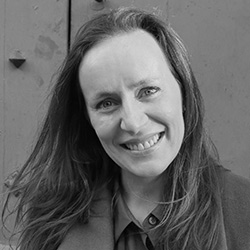
Mónica Bello (ES/CH) ist eine spanische Kuratorin und Kunsthistorikerin. In ihrer kuratorischen Praxis konzentriert sie sich auf die Überschneidungen zwischen den Disziplinen. Seit 2015 ist sie Kuratorin und Leiterin der Kunstabteilung am CERN, der Europäischen Organisation für Kernforschung in Genf. Am CERN entwirft und leitet sie die Kunststrategie des Labors und koordiniert die Kunstprogramme: die künstlerischen Residencies, die Kunstaufträge und die Ausstellungen. Derzeit arbeitet sie an der Ausstellung Exploring the Unknown, der Eröffnungsausstellung für das CERN Science Gateway, mit Werken der Künstler*innen Julius von Bismarck, Chloé Delarue, Ryoji Ikeda und Yunchul Kim. Kürzlich kuratierte sie den isländischen Pavillon auf der 59. Biennale von Venedig, vertreten durch den Künstler Sigurður Guðjónsson. Im Oktober 2022 kuratierte sie die Ausstellung Transits im Kunstmuseum Reykjavík, eine Einzelausstellung von Guðjónsson. Im Jahr 2018 kuratierte sie Quàntica/Broken Symmetries, eine Wanderausstellung mit Werken von Arts at CERN. Im selben Jahr wurde sie eingeladen, Gastkuratorin der renommierten Audemars Piguet Art Commission zu sein, die auf der Art Basel präsentiert wurde. Vor ihrer Ankunft in der Schweiz war sie künstlerische Leiterin von VIDA (2010-2015) bei der Fundación Telefónica in Madrid, einer bahnbrechenden Initiative, die kulturübergreifende Ausdrucksformen rund um den Begriff des Lebens förderte. Sie initiierte und leitete (2007-2010) die Abteilung für Bildung am Laboral Centro de Arte in Gijón (Spanien). Sie kuratierte Ausstellungen, Veranstaltungen und Publikationen auf internationaler Ebene und unterstützte Kunstschaffende und Forscher*innen aus verschiedenen Bereichen und mit unterschiedlichem Hintergrund. Als international anerkannte Persönlichkeit in Kunst- und Wissenschaftsnetzwerken hält Bello regelmäßig Vorträge auf Konferenzen und nimmt an Auswahlkommissionen, Beiräten und Mentorenprogrammen teil.
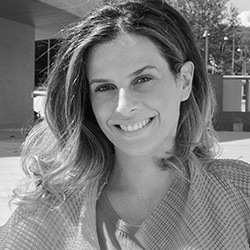
Francesca Bria (IT) ist Präsidentin des italienischen Nationalen Innovationsfonds und Mitglied des Verwaltungsrats der italienischen öffentlich-rechtlichen Medienanstalt RAI. Sie ist Honorarprofessorin am Institut für Innovation und öffentliche Zwecke am UCL in London und gehört dem hochrangigen Runden Tisch für das neue europäische Bauhaus an, der von der EU-Kommissionspräsidentin Ursula von der Leyen eingerichtet wurde, um den Green Deal der EU zu beschleunigen. Sie war früher Chief Digital Technology and Innovation Officer der Stadt Barcelona in Spanien. In dieser Funktion leitete sie die Smart City Agenda und war eine der Gründer*innen der United Nations Cities Coalition for Digital Rights. Francesca Bria leitet das EU-Vorzeigeprojekt DECODE zur Datensouveränität in Europa und ist leitende Beraterin des EU-Programms S+T+ARTS (Innovation at the nexus of Science, Technology and the Arts). Francesca hat einen Doktortitel in Innovation und Unternehmertum vom Imperial College in London und einen MSc in digitaler Wirtschaft von der University of London, Birbeck. Als Senior Programme Lead bei Nesta, der britischen Innovationsagentur, leitete sie das EU-Projekt D-CENT, das größte europäische Projekt zu digitaler Demokratie und Krypto-Plattformen. Außerdem leitete sie das EU-Projekt Digital Social Innovation und beriet die EU in Fragen der digitalen Innovationspolitik und der missionsgesteuerten Innovation. Sie hat an mehreren Universitäten in Großbritannien und Italien gelehrt und Regierungen, öffentliche und private Organisationen zu Technologie- und Innovationspolitik und deren sozioökonomischen, geopolitischen und ökologischen Auswirkungen beraten. Francesca wurde zum Kommandeur des Verdienstordens der Italienischen Republik ernannt. Sie wurde vom Forbes Magazine in die Liste der 50 führenden Frauen in der Technologiebranche aufgenommen. Francesca ist außerdem laut der Frankfurter Allgemeinen Zeitung (FAZ) Kulturschaffende des Jahres 2020 und gehört laut Apolitical zu den 20 einflussreichsten Personen im Bereich der digitalen Verwaltung weltweit.

Bernd Fesel (DE) verfügt über mehr als 30 Jahre Erfahrung in der Kultur- und Kreativbranche und ist derzeit Interimsgeschäftsführer des künftigen EIT Culture & Creativity, einer neuen Innovationsgemeinschaft, die vom Europäischen Innovations- und Technologieinstitut unterstützt wird und 50 Partner aus 20 Ländern zusammenbringt, um neue Innovationsmöglichkeiten für die 3 Mio. Kultur- und Kreativakteure in Europa zu schaffen. Davor war Bernd Direktor des European Creative Business Network (ECBN), einer gemeinnützigen Organisation mit über 170 Mitgliedern aus 44 Ländern, die die Kultur- und Kreativwirtschaft in Europa unterstützt und entwickelt. Davor war er als Serienunternehmer im CCSI-Sektor tätig, hatte die Rolle des stellvertretenden Direktors der Kulturhauptstadt Europas im Ruhrgebiet inne und war Senior Advisor des Legacy-Instituts von RUHR.2010 bis 2018: dem Europäischen Zentrum für Kreativwirtschaft in Dortmund. Er spielte eine Schlüsselrolle in EU-Initiativen wie dem JRC-Creative City Monitor, dem Voices for Culture Programm und ENTACT und baute eine Europäische Forschungsallianz zu Spillover-Effekten von Kultur und Kreativität auf. Seit 1990 ist Bernd Gründer von Startups, Architekt neuartiger öffentlicher Organisationen, Inspirator für Programme und Strategien für das CCSI, Freund und Vermittler von anerkannten Künstlern sowie Influencer und Verleger.

Jun Inada (JP) ist Abteilungsleiter bei RICOH Co.LTD Tokyo, Japan. Erfahrener Direktor für Unternehmensplanung in der Informationstechnologie- und Dienstleistungsbranche. Er hat sich mit großem Engagement dem Wandel der Organisationskultur und der Entwicklung neuer Visionen und Geschäftsmodelle in großen Unternehmen gewidmet. Berufliche Erfahrung: Mitarbeiter, RICOH Co.LTD, Tokio (2005-2009): Außendienst in Japan, Handelsbetrieb, Lieferkettenmanagement. Manager, RICOH Europe SCM, Bergen op Zoom (2009-2012): Supply Chain Management im europäischen Zentrallager in den Niederlanden. Einführung/Entwurf des Oracle-Systems als neues SCM-Kernsystem. Spezialist, RICOH Europe PLC, London (2012-2015): Budgetplanung für die europäische Zentrale, Unterstützung des operativen Geschäfts, Entwicklung neuer Märkte in Großbritannien, wo sich die europäische Zentrale befindet. Vorstandsmitglied, RICOH UK PLC, London (2015-2017): Entwicklung des japanischen Kundengeschäfts, Entwicklung neuer Geschäfte. Abteilungsleiter, RICOH Co.LTD, Tokyo (2017-heute): Direkte Zusammenarbeit mit dem CEO, um Talente und Werte zu generieren und die kreative Geschäftssäule zu stärken.

Univ. Prof. Dr. Meinhard Lukas (AT) ist seit Oktober 2015 Rektor der Johannes Kepler Universität Linz (JKU). Er ist Professor für Zivilrecht und hatte bereits zahlreiche akademische Positionen inne, darunter die des Dekans der Rechtswissenschaftlichen Fakultät (2011 bis 2015). Darüber hinaus ist Meinhard Lukas Sachverständiger des Justizministeriums für Gesetzgebungsverfahren, österreichischer Vertreter in der Kommission der Vereinten Nationen für internationales Handelsrecht (UNCITRAL), Beiratsmitglied des „Linzer Kulturentwicklungsplans Neu“ und korrespondierendes Mitglied der Ärztekammer für Oberösterreich. Während seiner Amtszeit als Rektor der JKU hat sich Meinhard Lukas für einen stärkeren Dialog zwischen Kunst und Technologie eingesetzt, indem er gemeinsam mit Ars Electronica das Ars Electronica Festival unterstützte und die Festival University initiierte sowie die Entwicklung der Art x Science School for Transformation förderte, ein interuniversitäres Programm, das gemeinsam von der Universität für angewandte Kunst Wien und der JKU angeboten wird.
S+T+ARTS Prize Advisors 2023
Die Advisors sind renommierte, internationale Berater*innen mit Expertise auf diesem Gebiet. Sie empfehlen Projekte und ermutigen ein breites Spektrum an möglichen Teilnehmer*innen zur Einreichung. Darüber hinaus achten sie auf Ausgewogenheit hinsichtlich Geschlecht und geografischer Herkunft der Teilnehmer*innen.
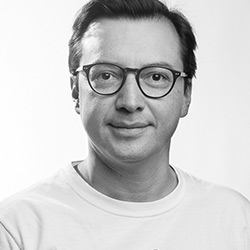
Andrés Burbano (CO) ist Professor an der Fakultät für Kunst und Geisteswissenschaften der Offenen Universität Katalonien (Barcelona, Spanien) und Gastdozent an der Donau-Universität (Krems, Österreich). Er promovierte in Medienkunst und -technologie an der University of California in Santa Barbara (Kalifornien, USA) und verbrachte den Großteil seiner akademischen Laufbahn an der Fakultät für Architektur und Design der Universidad de los Andes (Bogotá, Kolumbien). Burbano arbeitet als Forscher, Kurator und interdisziplinärer Künstler. Seine Forschungsprojekte konzentrieren sich auf Mediengeschichte und Medienarchäologie in Lateinamerika und dem globalen Süden, 3D-Modellierung archäologischer Stätten und die historischen und kulturellen Auswirkungen von Computertechnologien. Burbano ist zum Vorsitzenden der ACM SIGGRAPH 2024 ernannt worden. Sein Buch Different Engines: Media Technologies from Latin America ist 2023 bei Routledge als Teil der Buchreihe Design, Technology and Society erschienen.
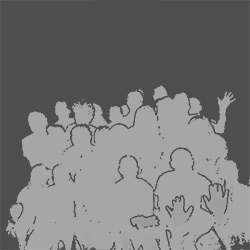
Hackers & Designers (NL) ist eine gemeinnützige Workshop-Initiative mit dem Schwerpunkt auf Technologie, Design und Kunst sowie interdisziplinärem Austausch. Die Aktivitäten von H&D richten sich sowohl an „Macher*innen“ als auch an „Nutzer*innen“, um Themen im Zusammenhang mit der Abhängigkeit von Technologie in unserem täglichen physischen und digitalen, privaten und beruflichen Leben zu diskutieren. Durch die Entwicklung praktischer und barrierearmer Formate für das Lernen und Experimentieren mit Hard- und Software fördert H&D die Zusammenarbeit zwischen verschiedenen Disziplinen, die technologische Kompetenz und die unterschiedlichen Wissensstände. H&D-Aktivitäten gehen Hand in Hand mit dem Bau von Werkzeugen, die dokumentiert und veröffentlicht werden, damit sie von anderen genutzt, angeeignet und verändert werden können – damit sind Software- und/oder Hardware-Konstruktionen sowie pädagogische, organisatorische und kollaborative Tools, die eine kritische Auseinandersetzung mit und durch Technologie ermöglichen, gemeint.
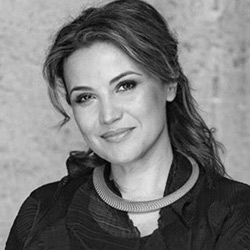
Lydia Kallipoliti (GR) ist Architektin, Ingenieurin und Wissenschaftlerin, deren Forschung sich auf die Überschneidungen von Architektur, Technologie und Umweltpolitik konzentriert. Sie ist außerordentliche Professorin an der Cooper Union in New York. Ihre Arbeiten wurden veröffentlicht und auf zahlreichen Ausstellungen gezeigt, darunter die Biennale von Venedig, die Istanbul Design Biennale, die Storefront for Art and Architecture in New York und das Londoner Design Museum. Sie ist Autorin des preisgekrönten Buches The Architecture of Closed Worlds, Or, What is the Power of Shit (Lars Muller Publishers, 2018) und Herausgeberin von EcoRedux, einer Sonderausgabe der Zeitschrift Architectural Design (AD, 2010). Sie ist die Leiterin des Thinktanks ANAcycle, der bei den Build Awards 2019 und 2020 als führender Innovator für nachhaltiges Design ausgezeichnet wurde.
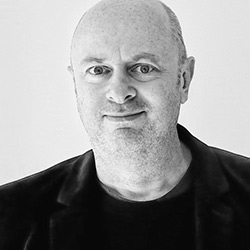
Jon McCormack (AU) ist Medienkünstler und Forscher und lebt in Melbourne, Australien. Derzeit ist er Forschungsprofessor und Direktor des SensiLab der Monash University, einem Forschungslabor für kreative Technologien, das Künstler*innen, Designer*innen, Wissenschaftler*innen und Technolog*innen in transdisziplinärer Zusammenarbeit zusammenbringt. McCormacks eigene kreative Arbeit umfasst generative Systeme, Mensch-Maschine-Kreativität und kreative künstliche Intelligenz. Er hat über 18 Auszeichnungen für künstlerische Innovation und technische Forschung erhalten, darunter den Eureka Prize for Innovation in Computer Science und den Lumen Prize for Digital Art.

Kyuseung Keith Noh (KR) ist Team Lead & Creative Director von ZER01NE, der kreativen Talentplattform der Hyundai Motor Group. Die Mission von ZER01NE ist menschenzentrierte Innovation, die über die typische Open Innovation anderer Unternehmen hinausgeht. ZER01NE fördert Kreative und Startups, die durch die Zusammenarbeit von Kunst, Technik und Wirtschaft die Probleme der zukünftigen Gesellschaft herausfordern und lösen können. Seit 2018 wurden über 120 Kreative und 80 Startups unterstützt und finanziert. Schließlich ist er auch professioneller Investor und geschäftsführender Gesellschafter von ZER01NE Fund.

Katja Schechtner (AT) ist eine Stadtforscherin, die neue Technologien entwickelt und innovative Politiken gestaltet, um Städte in Bewegung zu halten. Derzeit konzentriert sie sich auf eine Neubewertung der Position der Natur innerhalb städtischer Governance-Prozesse mit MIT LCAU und dieAngewandte und befasst sich gleichzeitig mit Fragen der Stadtpolitik mit besonderem Schwerpunkt auf dem Verständnis der menschlichen Wahrnehmung der – und der Interaktion mit – der gebauten Umwelt mit MIT senseable city lab. Zuvor leitete sie Innovations- und Technologieprogramme bei der OECD in Frankreich, der Asiatischen Entwicklungsbank auf den Philippinen und beriet die Interamerikanische Entwicklungsbank in Costa Rica und Argentinien, die EU-Kommission und leitete ein angewandtes Forschungslabor am Austrian Institute of Technology – und das alles bei Gastprofessuren, Lehraufträgen und Forschungsaufenthalten weltweit, z.B. am MIT Media Lab, Paris-Saclay, dieAngewandte, TU Wien oder HDM Stuttgart.
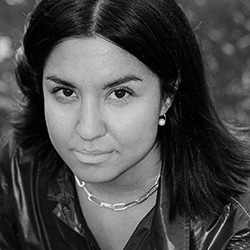
Yasaman Sheri (CA) ist eine Designerin, Autorin und Forscherin, die an der Schnittstelle von Technologie, Wissenschaft und kreativer Forschung arbeitet. In ihrer Arbeit erforscht sie neuartige Schnittstellen unter Verwendung von Sensortechnologien, synthetischer Biologie, Simulation und Wahrnehmungssystemen. Derzeit ist sie leitende Forscherin des Synthetic Ecologies Lab der Serpentine Gallery.
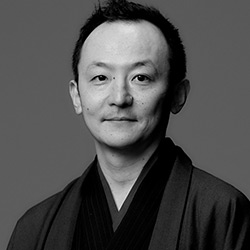
Kei Takeuchi (JP) ist stellvertretender Generaldirektor der Abteilung für Marken- und Innovationsdesign bei der japanischen Werbeagentur Hakuhodo. Er arbeitet mit Kund*innen an der Markenbildung und Innovation durch „die Integration von Logik und Sensibilität“ und „Co-Kreationsprozess“. Er leitet auch die Hakuhodo-Aktivitäten eines Kooperationsprojekts mit Ars Electronica.
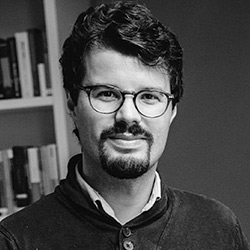
Rodolfo Groenewoud van Vliet (NL) ist Mitbegründer von In4Art – einem unabhängigen Institut für kunstgetriebene Innovation, das 2015 gegründet wurde. Seine Interessen liegen in der Erforschung und Prototypisierung von Technologie- und Wirtschaftsmöglichkeiten, die die kurz- und langfristige Zukunft von Lebensmitteln, Produktion, Gesundheit und Biodiversität beeinflussen werden. Gemeinsam mit seiner Frau und Mitarbeiterin Lija Groenewoud van Vliet hat er die Methodik der kunstgetriebenen Innovation entwickelt und praktiziert sie, die derzeit über 75 internationale experimentelle Programme und Projekte antreibt, die Kunst, Wissenschaft, Technologie und Industrie einbeziehen.

Ksenia Zaytseva (CA/RU) ist eine Datenexpertin mit fast einem Jahrzehnt Erfahrung in der Industrie, der Forschung und im Bereich des kulturellen Erbes. Derzeit arbeitet sie als Datenarchitektin bei Electronic Arts, einem Unternehmen für Videospielsoftware. Bevor sie in die Industrie wechselte, arbeitete sie im wissenschaftlichen Bereich am Canadian Centre for Computational Genomics, wo sie an mehreren landesweiten Projekten zur Schaffung einer Dateninfrastruktur für die Durchführung groß angelegter verteilter Analysen genomischer und neurowissenschaftlicher Daten beteiligt war. Davor arbeitete sie am Österreichischen Zentrum für Digitale Geisteswissenschaften der Österreichischen Akademie der Wissenschaften und trug zu zahlreichen interdisziplinären Projekten an der Schnittstelle von Technologie, Geistes- und Sozialwissenschaften bei.
Technology as a Renewing Force
Statement of the S+T+ARTS Prize’23 Jury (Mónica Bello, Francesca Bria, Bernd Fesel, Jun Inada, Meinhard Lukas)
The jury has carefully selected a total of 12 projects, including two Grand Prizes and ten Honorary Mentions. These projects showcase both the potential and the desire to create an impact, with a particular focus on addressing pressing issues such as ecological, technological, socioeconomic, and cultural challenges that are being faced globally today. The jury had the challenging task of reviewing a wide range of diverse proposals, which covered topics ranging from planetary wellbeing, health awareness and care, environmental health, to mental health in the post-pandemic era.
One notable theme in the awarded projects was the engagement and empathy towards other species and living entities. Detailed proposals were presented to intervene in endangered contexts or employ mechanisms and methodologies that promote rewilding. Given the current ecological collapse, interdisciplinary collaborations are essential, and art plays a fundamental role in this endeavor. Artists have brought forth issues raised by advanced computing technologies, as has become common in the S+T+ARTS Prize. The selected proposals also address the role of information systems in shaping an open and egalitarian society, covering themes such as post-truth, freedom of movement, digital life, identities, surveillance, and critique of the opacity of digital systems. Notably, AI and the latest AI systems and software are considered, reflecting the evolving technological landscape, while blockchain also finds representation.
Unique to this occasion, there is an empathic understanding of both the digital and physical realms. Some proposed ideas present technology as a renewing force, simulating undisturbed forests or collective identities to revive ancestral knowledge that has been obscured since industrial colonization. The proposals shed light on the material and digital transactions taking place globally, which impact us and other species. They express the inherent tensions of a techno-capitalist society and suggest a move towards a more caring era under renewed multispecies landscapes.
Knowledge, its transfer, production, and utilization, lie at the core of S+T+ARTS. The jury thoroughly reviewed the proposals with these aspects in mind, including the processes of obtaining, processing, and analyzing information to define policies in relation to the ecologies of knowledge. During the jury deliberations, the artists‘ drives and motivations to understand the processes behind knowledge production became apparent. Artists in this edition were particularly concerned with aligning their creative processes with sustainable and ethical goals. The innovative input demonstrated the ethical sensibility characteristic of their practice. The methodologies employed by the artists are reflective of practices observed in the field of art, science, and technology over the past decades. These methodologies include accuracy in facts, functionality, investment in the medium, interest in the materiality and its implications, process-oriented approaches, fieldwork orientation, collective authorship, and community-oriented work. If STARTS is committed to cultural and societal innovation, it should respond to these premises and intervene purposefully. All the projects awarded this year embody these principles, proposing improved ways to address the present and to envision sustainable futures while considering the diversity of scales, and different contexts and locations. The responsible and ethical response to these circumstances has been remarkably summarized in this year’s awards.
The S+T+ARTS Prize is annually awarded in two categories: artistic exploration and innovative collaborations between disciplines or communities. The latter category emphasizes the interaction between artists and engineering, natural sciences, or social sciences. During the jury meeting, it became evident that the hybrid nature of the proposals expands the meaning of „collaboration.“ Collaboration has been a term challenged by the practice of art and science. Artists spend time in laboratories, bringing scientific and technical input into their studios, and engaging in unconventional propositions and experiments. This is evident in the project awarded with the Grand Prize for Artistic Exploration: Alexandra Daisy Ginsberg’s Pollinator Pathmaker is an interspecies artwork that responds to the ecological damage caused by humans. Through art, it fosters empathy and agency in our relationship with other species, particularly pollinators, aiming to provoke a caring response. This unique artwork contributes to a more diverse and comprehensive understanding of our environment as an ecology of knowledge.
The Grand Prize for Innovative Collaboration aims to emphasize the importance of cross-sectorial and trans-disciplinary collaborations. Photographer and artist Richard Mosse embarked on a long-term project in the Amazon rainforest, driven by concerns about climate change and the future of the planet. In Broken Spectre Mosse developed a series of technologies, including multispectral cameras, ultraviolet botanical studies, and heat-sensitive analogue films affected by the conditions of fires and burning in the forest. These technologies, along with GIS imaging technology for aerial maps, were developed with the support of scientists and technologists. However, it is crucial to recognize the trust and involvement gained from the Hutakara Yanomami people and other communities fighting for the survival of their habitats.
Artists have long collaborated with scientists and technologists. Collaboration takes various forms, and one of its purposes is to bring urgency into action, which can only be visualized and made tangible through art. The field of art and science has shown the benefits of bypassing conventional conventions for innovation. In S+T+Arts, arts merge with science, becoming part of a symbiotic medium. The jury awarded the innovative appeal where a collaboration between art and science takes place.
S+T+ARTS Prize ’23
Grand Prize – Innovative Collaboration
Awarded for innovative collaboration between industry or technology and the arts (and the cultural and creative sectors in general) that opens new pathways for innovation.
Broken Spectre, Richard Moss
The deforestation of the Amazon is the global symbol of 21st century of the erasure of ecosystems and its seemingly ever increasing speed-a bleak indication of the human-made roots for the world failing to fulfil the Paris Agreement by limiting global warming to below 1.5 °C. While this is common knowledge today, there is no common action or change taking place. What is needed to save the Amazon and to save the world? More research? More data? More reports? More warnings? What do we as a global collective need to see to implement change? We all feel the need for a new way of seeing, viewing, and then acting upon environmental catastrophes: Broken Spectre offers an opportunity for each and everyone to see with refreshed eyes, and to understand with perspectives shifted and with novel layers of previously hidden dimensions of the Amazon deforestation. Richard Mosse’s creation is as much an artwork as a technological masterpiece, almost like a film. He calls it a „dreamlike immersive video artwork … using powerful scientific technologies.“
The jury sees Broken Spectre as a role model for the societal potential of unforeseen collaborations between art and science. It raises the relevance of art and of science into a dimension that could not be reached by either art or science alone.
Mosse’s work is highly innovative in many ways: using the world’s first multispectral camera for Geographic Information Systems (GIS) to shoot using S35mm B&W infrared film, using x2 anamorphic lenses, films that no film lab would process. He created a film lab in the process of making Broken Spectre, and he broke the boundaries of disciplines and technologies to show the breakdown of the Amazon and our global ecosystem. Finally he worked with photographic technologies based on the European Space Agency’s Sentinel 2 multispectral remote sensing program.
All these innovative collaborations facilitate the communication of a new experience, a novel force that touches the viewers‘ minds and senses, conveying knowledge and emotion-a compelling revelation of the ”extractive violence“ as Mosse states.
The jury sees Broken Spectre as an innovative collaboration not just of art and technology, but a collaboration of innovators that push the boundaries and home turf of their various disciplines to show the world something new and previously unseen. It also made us rethink the purpose of collaboration by actively involving citizens and indigenous communities to participate in the capture and production of this evidence together with the artists. Broken Spectre is a must-see and will hopefully inspire others to not just experiment with technologies, but to shift the ways of thinking about them, to activate in novel and daring ways for a greater global good.
S+T+ARTS Prize ’23
Grand Prize – Artistic Exploration
Awarded for artistic exploration and art works where appropriation by the arts has a strong potential to influence or alter the use, deployment, or perception of technology.
Pollinator Pathmaker, Alexandra Daisy Ginsberg
Pollinator Pathmaker, a living plant sculpture designed to serve the natural world and the cause of ecological preservation, sets a benchmark in the realm of environmental art and biodiversity preservation. In its essence it is a remarkable piece of environmental art and conservation that holds the well-being of endangered pollinating insects above human aesthetics. It represents an innovative paradigm where art exists for the sake of these living organisms. The Pollinator Pathmaker creates a network of Edition Gardens, each uniquely designed to suit the needs of local pollinating species. These gardens have been carefully brought to life using sophisticated algorithmic tools and expert insights. This project invites humans to shift their perspective and view the garden through the eyes of these at-risk pollinators. It’s an innovative marriage of artistic creativity with scientific understanding that promotes ecological awareness. Expanding its roots from the UK to Berlin, Pollinator Pathmaker underscores its commitment to international collaboration and regional environmental sustainability. At the heart of the project is a custom-built algorithmic tool that draws on a curated plant database. The tool, working with horticulturalists and pollinator experts, uses unique Plant Palettes to select locally appropriate plants beneficial to pollinators. These Palettes cater to the specific needs of the pollinators in each region, enhancing habitats for bees, moths, ants, wasps, and beetles, and providing spaces tailored to their distinct pollinating styles.
The outcomes of this groundbreaking blend of art, science, and technology offer sanctuaries for pollinators, nurturing biodiversity and bolstering our ecosystem’s resilience. Beyond the gardens themselves, Pollinator Pathmaker extends its reach online. This platform empowers anyone to harness the power of its algorithm and design their own pollinator-friendly garden, encouraging wider engagement in environmental conservation. As Pollinator Pathmaker continues to blossom, it serves as a vivid illustration of the crucial role of innovative exploration at the intersection of art, ecology, and technology can play in tackling key ecological challenges. We eagerly anticipate more ‚artworks for pollinators,‘ enhancing habitats and inspiring global environmental consciousness.
S+T+ARTS Prize ’23
Honorary Mentions
Between the Lines, Sarah Selby
The nation-state concept of regulated immigration is executed through the border regime of individual states. Increasingly, artificial intelligence and automated decision-making algorithms are used to quantify human experience, transforming individuals into statistical risk ratings. Between the Lines takes advantage of these very technologies to hold a mirror up to the border regime and ultimately to political decision-makers. The idea of transforming the testimonies and experiences of individuals affected by the border regime into binary data to be injected into pens for border regime officials in the form of synthetic DNA mixed with writing ink is ingenious: The purpose of the concrete use of technology is deciphered by the use of this very technology. At the same time, this is intended to trigger a process of reflection among the actors of the border regime and, in the best case, among the political decision-makers. In the case of the use of the pens by the officials of the border regime in their work, the personal experiences of those affected in the past become part of the bureaucratic system. The longer this system works with and through the addressed technology, the more it spreads the experiences of its affected persons. All this is based on the latest technology in data storage, the „DNA Digital Data Storage.“
Child of Now, Robert Walton, Julianne Pierce, Claire Coleman, University of Melbourne, Arts Centre Melbourne, Phoria
What will we pass on to the next generation? For those of us living in the present, it is crucial to have a future-oriented mindset that considers those who will live in the next era. The Child of Now project has the potential to bring about a significant social impact by addressing global challenges based on unique linguistic and environmental history, starting from the Australian experience with a possibility for further regional development. Referring to the concept of ‚everywhen‘ and collaborating with the First Nations and author Claire Koleman for creating the storytelling, the artists built an immersive experience. Through the use of the volumetric capture system, the „digital holograms“ created can be experienced in a VR environment. In this way, the project enables people to know the past and see the future through an installation, providing an important opportunity for individuals to think about their personal situation.
Climavore, Cooking Sections
How to eat as humans change climates? Cooking Sections‘ project CLIMAVORE, conceived by Daniel Fernández Pascual and Alon Schwabe, does not merely intersect the realms of art, culinary practices, and environmental action but transcends them, redefining our societal understanding and interaction with our food and climate. The CLIMAVORE project responds dynamically to anthropogenic climatic events and landscape modifications, challenging large-scale agribusiness, and exposing the geopolitical implications behind climate alterations in an era where anthropogenic impact on food and the environment is increasingly pressing. It proposes a forward-thinking interpretation of food production and consumption, responsive to the evolving climatic phenomena. It magnifies the detrimental effects of carnivorous consumption on our planet and presents an opportunity to shift towards sustainable eating habits and environmental consciousness in food preparation and consumption. Cooking Sections has managed to create a distinctive art form, by instigating a conscious discourse on how our eating habits affect the climate and by making visible the potential of art as a catalytic tool for ecological and social change. By proposing the concept of “devouring” as a response to the anthropogenic impacts on landscapes, it illustrates how food itself can provide spatial and infrastructural solutions to climate alterations. This project encourages a flexible eating culture, adaptive to current environmental conditions, whether that be shifting to drought-resistant crops in times of water scarcity or relying on filter feeders in polluted or acidified waters. The influence of this project is far-reaching, impacting UK and European cultural institutions and beyond. The approach of Cooking Sections-a blend of art, cuisine, and ecology-is not just a work of art; it is a statement, a call to action, a new way of life.
Hashd0x | Proof of War , Egor Kraft
While violent armed conflicts are documented in the daily news, the wounds, injuries, fears, and terror often lack documentation. And even more: in the age of disinformation and information warfare a novel kind of documentation and proof is needed: an instant and spoof-proof on-chain evidence capture and forensics tools through the registration of metadata and content hashing involving decentralized storage networks: Hashd0x. The collaboration of artists, experts in software development, hardware based projects development, and academic research in the fields of computer and social sciences, game theory, critical design, and art produced a precious coin with two, inseparable sides: first, a software for digital watermarks and proof, and secondly an art installation of 3D rendering representation of one of the houses in the tragically infamous town of Bucha. Proof of War: let’s hash it as proof of hope for justice and peace in Europe.
Labyrinth Psychotica – The Anoiksis Experiment by Roomforthoughts, Jennifer Kanary
Jennifer Kanary’s work aims to educate people who are involved with psychosis in a variety of contexts. Her work makes psychosis tangible for so-called neurotypical people in order to change our understanding of psychosis. It is about better understanding what it means to be another person. This can benefit psychiatrists, family members, or even students, who can relate much better to affected individuals because of this innovative approach. After all, according to studies, one in thirteen people is affected by psychosis or psychotic experiences. The initial inspiration for her work was a tragic event. Her sister-in-law, who suffered from schizophrenia, committed suicide in a state of psychosis. Only afterwards did she realize that she did not understand what her sister-in-law had been going through. Therefore, she began to develop a psychosis simulation using the means of technology and art. In doing so, Kanary used a radical artistic research theory method and a new VR psychosis simulation experience. It is a mixed reality VR psychosis simulation. It can simulate more than 42 subjective psychosis experiences. By creating space for psychosis through the means of art, she aims to prevent precisely these kinds of psychoses through early recognition. Thus, ICT is not only used to make it more comprehensible, but also to build empathy, with a view to creating a healthier and more tolerant society.
MetaPhase: a contrapuntal dialogue between a pianist and her avatar in the metaverse, Giusy Caruso, LWT3
What kind of new possibilities will technological advancements bring to our music experiences? MetaPhase invites us to encounter the music performance in a new world where humans and avatars harmonize in both real and virtual space. What is noteworthy about this project is that the performers‘ movements and gestures are captured with high accuracy by a motion tracking system and that they are embodied on the screen in the form of digital avatar. Thus, the public can savor every detail of the relationship between gesture and sound. Along with that, the application of such capturing technologies made it possible to collect bio-metadata for use in expression and in various research directions. This is one of the fantastic projects that impressed the jury with its remarkable artistic approach and accomplished innovative exploration.
Sensing for Justice – SensJus, Anna Berti Suman
The rule of law must prove itself in the enforcement of justice. This is especially true when parties with very different financial means clash in a legal dispute. In reality, however, it is often impossible for communities to enforce damages caused by corporations, such as environmental damage, because the burden of proof is already prohibitive for them. Sensing for Justice – SensJus starts exactly here and wants to initiate an effective example of citizen participation through research in a very comprehensive sense, including creative and artistic approaches. For good reason, the poorest regions of southern Italy, which are at the same time affected by massive environmental damage due to raw material extraction, were chosen as the focus. Remarkable is the exploration and research carried out together with the communities and practitioners, which through a special empathy mediated by performative, visual, and narrative approaches, come very close to the ideas and interests of the citizens. It is striking how this project uses creativity and research creation as forms of caring and empathy toward the research subject. Ultimately, this work is about nothing less than access to justice, particularly in the area of environmental law, which is so important, and thus a central concern of the EU Charter of Fundamental Rights.
Server Farm , James Bridle
Server Farm represents a new paradigm for our Technosphere that marries technology and sustainability in an unprecedented and radical way. The project’s cross-disciplinary nature indicates a pioneering leap into a future where biology, agronomy, and artistic practice merge, crafting a world where nature’s intelligent design becomes a framework for sustainable and regenerative computational systems. The Server Farm project is a testament to the paradigm shift that is vital for our survival in this era of global warming, environmental devastation, and extractivist digital capitalism. By replacing contemporary computation components with biological systems, Server Farm provides a compelling model for the potential of decentralized, rooted, and regenerative technological infrastructures. This initiative utilizes the potential of DNA encoding, mycelial networks, carbon sequestration, and permaculture processing, to put forward a cutting-edge vision that can completely transform the current toxic technological infrastructures. It is a project of profound ecological consciousness, brilliantly illustrating that technological advancement need not be at the expense of the environment, by challenging conventional industrial processes, offering an environmentally conscious path forward in which technology plays a significant role in repairing the biosphere, and improving our relationships with the more-than-human world. Bridle’s Server Farm is more than a concept; it is a strong, applicable, and necessary utopia that signifies the importance of interplay between technological innovation and environmental sustainability. It is a call to action for us to start thinking and acting differently in our relationship with technology and the environment.
Turba Tol Hol-Hol Tol
Awareness of the challenges posed by climate change, and the various approaches being taken to address it, is increasing around the world. What we appreciated in the Turba Tol Hol-Hol Tol project is its orientation towards peatlands and the interdisciplinary character of their investigation. It is essential to address the issue of environmental conservation not only by developing something entirely new, but also by utilizing the valuable resources and knowledge that already exist, by addressing the local population, like the indigenous Selk’nam people of Patagonia. Thus, the project also addresses social issues and the rights of indigenous people. By highlighting this project, we hope that the world will gain a better understanding of the importance of the wetlands and the crucial role they play in regulating our environment and offsetting the challenges of climate change.
VFRAME: Computer Vision for OSINT/OSI Research, Adam Harvey, Josh Evans, Jules LaPlace
Human rights and conflict zone monitoring is a domain of research in itself-and even one of commercial industries. To establish monitoring of conflicts beyond the bias of industry and policy interests, VFRAME pioneers an artistic approach to 3D-photogrammetry, 3D-rendering, and 3D-printing, to generate synthetic data for training neural networks. With 3D-artistry monitoring software can be trained to be unbiased on unlimited data – and then it can monitor conflicts in a less biased or even an unbiased way. Art for Peace is a long-standing mission of creators of all times. VFRAME now re-frames the use of art, software, and reality to create a computer vision model to monitor harsh conflict realities. In 2022 VFRAME helped detect over 1,000 videos in the Syrian Archive that contained the RBK-250 cluster munition bomb. Artist-driven research on conflicts, using software and 3D printing, creates novel chances for peace in a world, where the digital and real dimensions of war (e)merge more and more.




